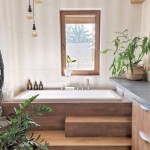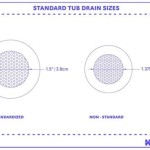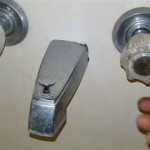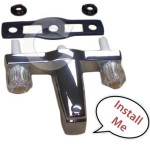The Most Expensive Bathtub Material: A Deep Dive
The selection of a bathtub is a significant decision for homeowners and designers alike. Beyond size, shape, and style, the material plays a crucial role in determining the bathtub's durability, heat retention, aesthetic appeal, and, most significantly, its price. While acrylic and cast iron are common choices, a select few materials stand out for their exceptional cost due to rarity, complex manufacturing processes, or inherent qualities that imbue luxury and exclusivity. This article will delve into the world of the most expensive bathtub materials, exploring their characteristics and why they command such premium prices.
The cost of a bathtub material is influenced by several factors. Raw material scarcity is a primary driver. Materials that are difficult to source or require extensive processing will naturally be more expensive. Manufacturing complexity also plays a crucial role. Highly intricate designs or specialized techniques, such as hand-carving or multi-stage firing, contribute to increased production costs. Brand reputation and exclusivity also affect pricing. Luxury brands often command higher prices due to their established image and the perceived value of owning a product associated with prestige. Finally, customization options can significantly increase the price. Bespoke designs, unique finishes, and personalized features all add to the overall cost of the bathtub.
Precious Metals: Gold, Silver, and Copper
Bathing in precious metals represents the epitome of luxury and indulgence. Gold, silver, and copper are not typically used in their pure form for constructing bathtubs; rather, they are applied as finishes or incorporated into the design in various ways. A bathtub entirely crafted from solid gold would be prohibitively expensive and impractical due to gold's softness. However, gold plating, often applied in multiple layers for durability, can transform a standard bathtub into a shimmering masterpiece. The cost is driven by the fluctuating price of gold in the market and the labor-intensive process of applying the plating evenly and flawlessly.
Silver, like gold, is often used for plating or as a decorative element. While less expensive than gold, silver requires regular polishing to maintain its luster and prevent tarnishing. A silver-plated bathtub would offer a sophisticated and elegant aesthetic, but its maintenance requirements may deter some buyers. The cost of silver plating depends on the thickness of the plating and the complexity of the bathtub's design. More intricate designs necessitate greater skill and time, leading to increased labor costs.
Copper, while less valuable than gold or silver, offers a unique aesthetic and excellent heat retention properties. Solid copper bathtubs are available, though often quite expensive due to the cost of the raw material and the skilled craftsmanship required to shape and finish the metal. Copper can develop a patina over time, adding to its character and charm. Some manufacturers offer copper bathtubs with tinned interiors to prevent the copper from reacting with bathwater. The cost of a copper bathtub can range from several thousand to tens of thousands of dollars, depending on the thickness of the copper and the level of detail in the design.
Natural Stone: Marble, Granite, and Onyx
Natural stone bathtubs exude timeless elegance and offer a unique connection to the earth. Marble, granite, and onyx are popular choices for creating luxurious and visually striking bathtubs. These materials are prized for their natural veining, color variations, and inherent durability. However, the extraction, shaping, and finishing of natural stone are labor-intensive processes that contribute to their high cost.
Marble bathtubs are particularly sought after for their classic beauty and smooth, cool surface. Different types of marble, such as Carrara, Calacatta, and Statuario, offer varying degrees of whiteness and veining, each with its own price point. The cost of a marble bathtub depends on the quality and rarity of the marble, the size and complexity of the design, and the level of craftsmanship involved. Carving a bathtub from a single block of marble is an exceptionally skilled and time-consuming process, which significantly increases the price.
Granite bathtubs offer a more rugged and textured aesthetic compared to marble. Granite is known for its strength and resistance to staining and scratching. While less commonly used than marble, granite bathtubs can create a dramatic and luxurious focal point in a bathroom. The cost of a granite bathtub is influenced by the type of granite, the size and shape of the bathtub, and the complexity of the finishing process. Polishing granite to a smooth, glossy finish requires specialized equipment and skilled labor.
Onyx bathtubs are among the most visually stunning and expensive options. Onyx is a translucent stone with distinctive banding and vibrant colors. When backlit, onyx bathtubs can create a mesmerizing effect, transforming the bathroom into a spa-like oasis. The rarity of onyx, coupled with the difficulty of working with this delicate stone, contributes to its high price. Carving a bathtub from a single block of onyx requires exceptional skill and precision to avoid breakage. The cost of an onyx bathtub can easily exceed tens of thousands of dollars.
Exotic Woods and High-End Composites
While less common than metal or stone, exotic woods and high-end composite materials can also command premium prices in the bathtub market. Certain types of wood, such as teak, mahogany, and wenge, are prized for their durability, water resistance, and aesthetic appeal. These woods are often sourced from sustainable plantations and require specialized treatment to prevent warping or cracking.
Wooden bathtubs offer a warm and natural aesthetic, creating a relaxing and inviting bathing experience. The cost of a wooden bathtub is influenced by the type of wood, the size and shape of the bathtub, and the complexity of the joinery and finishing. Hand-crafted wooden bathtubs, made using traditional woodworking techniques, can be particularly expensive. Special coatings and sealants are necessary to protect the wood from water damage and prevent the growth of mold or mildew.
High-end composite materials, such as engineered stone and proprietary blends of resins and minerals, offer an alternative to natural stone with enhanced durability and design flexibility. These materials can be molded into complex shapes and finished to resemble natural stone or other luxurious surfaces. Some composite materials also offer superior heat retention compared to acrylic or cast iron. The cost of a composite bathtub depends on the specific material, the complexity of the design, and the level of customization. Manufacturers often invest heavily in research and development to create proprietary composite materials with unique properties, which contributes to their higher price.
Ultimately, the choice of bathtub material is a personal one, influenced by budget, aesthetic preferences, and functional requirements. While the most expensive materials offer unparalleled luxury and visual appeal, they also require careful consideration in terms of maintenance and suitability for the intended bathroom environment. Understanding the factors that contribute to the cost of different bathtub materials can empower homeowners and designers to make informed decisions that align with their needs and aspirations.
How To Choose The Best Bathtub Material A Comparison Guide Vevano

A Guided Tour To The World S Most Expensive Baths

Blissful Bathing 5 Of The Most Luxurious Bathtubs In World

A Guided Tour To The World S Most Expensive Baths

Spectacular 1 Million Bathtubs Revealed For New Xxii Carat Villas In Dubai

Blissful Bathing 5 Of The Most Luxurious Bathtubs In World

How To Choose Between Granite Bathtub Quartz And Marble

Bathtub Materials 8 Best Types Cost And Benefits Modernize

7 Awesome Tub Materials For Luxury Bathrooms Maison Valentina Blog

4 Common Bathtub Materials Pros Cons What To Buy For Your Bathroom








